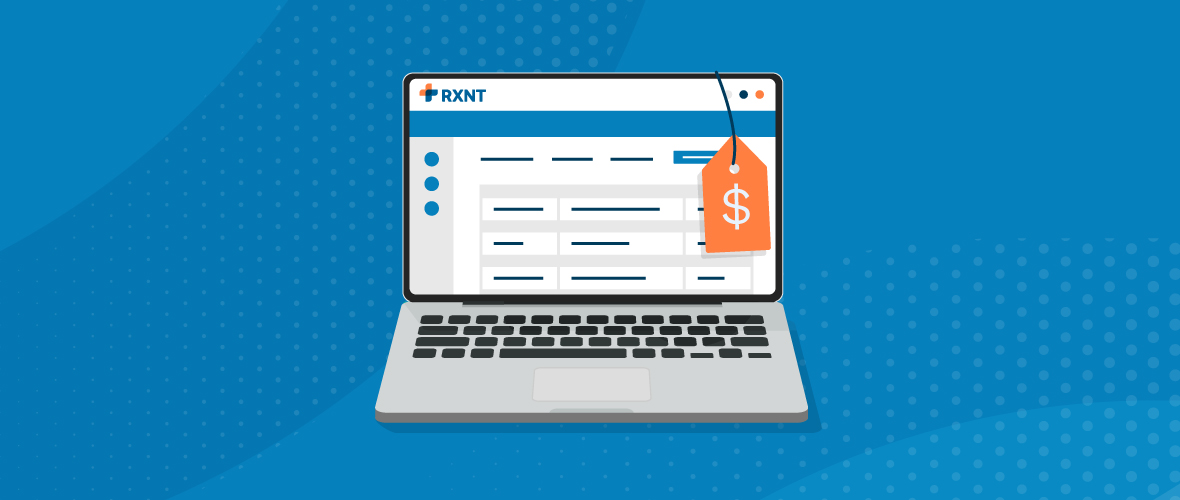Don’t let misconceptions about hidden fees and ongoing costs keep you from exploring software that will help you achieve the growth and success you deserve.
Do you know the truth about the cost of healthcare software? It’s likely not what you’d expect. Some platforms charge as much as $50,00 for implementation and data migration, but the range varies from vendor to vendor.
Healthcare software companies disclose pricing information in a variety of ways, often making the evaluation process cumbersome and time-consuming. Some require completing lengthy forms, custom quotes, or virtual conversations for even a ballpark number, while others are more black and white about their costs. Don’t let misconceptions about hidden fees and ongoing costs keep you from exploring software that will help you achieve the growth and success you deserve—there’s a solution for every healthcare practice.
Debunking Common Myths About the Cost of Healthcare Software
Myth #1: Software pricing is all-inclusive
While the initial monthly or yearly cost of software may be within budget, these prices often don’t include charges for add-ons like implementation and data migration. TechMagic reports that implementation costs can range from $20,000 to $50,000. However, not all software vendors (including RXNT) charge for setup. It’s an important question to ask during your research process.
Myth #2: Pricing is based on the total number of staff members using the software
Not all software companies set pricing the same way. For example, RXNT doesn’t charge for any non-licensed staff members who use our software—you only pay for licensed providers.
Myth #3: You have to pay extra to integrate with compatible healthcare software, send and receive referrals, generate electronic lab orders, or set up other data-sharing connections
Data migration is one of the biggest obstacles when changing software, both in terms of cost and effort. You can pay as much as $50,000 for data migration with some healthcare software vendors. Using a cloud-based software system can mitigate some of these challenges. Interoperability is critical to quality health outcomes and RXNT doesn’t charge for data migration between internal software (like billing) or external resources (such as labs or other providers). And we’ll take care of it for you, so there’s minimal effort required on your part.
Myth #4: Healthcare software is complex, inflexible, and difficult to understand, but you’re still required to pay extra for support and training
According to Ditstek, training can make a significant difference in the return on your software investment, but it can be expensive—as much as $5,000 per staff member for initial training and $2,000 per staff member for annual ongoing training. Training and support from RXNT’s US-based product experts is free. Don’t gamble on getting it right—get the training you need during set-up and whenever your practice staff grows, changes, or needs a refresh.
Myth #5: Adding EPCS functionality is expensive and complicated
The cost of EPCS setup, tokens, and annual fees can impact your software budget. When the United States federal government’s SUPPORT Act took effect on January 1, 2021, EPCS was required for Medicare Part D beneficiaries. Plus, most of the U.S. states have already mandated EPCS adoption, with more expected in the future. Good news! RXNT’s EHR and ERX software includes EPCS functionality at no additional cost and only charges $85 per year to cover the cost of two-factor authentication.
Transparent Software Costs Won’t Keep You Guessing
Cost is an essential factor in your healthcare software decision, but RXNT is transparent about our fees—in fact, they’re spelled out right on our pricing page. Looking to save even more? Get a 10% discount when you choose an annual plan for RXNT’s EHR, Practice Management, and Full Suite Solutions. And you won’t have to worry about hidden fees either. There’s no charge for 24/7 cloud-based access, implementation or training, system updates, mobile applications, or ongoing support from our dedicated team headquartered in Annapolis, MD.





